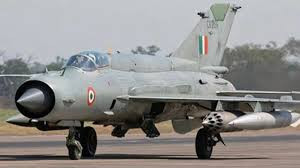MiG-21 bows out after 62 years — an icon of Indian air power that blended glory with costly risks

IIE DIGITAL DESK : India’s long relationship with the Mikoyan-Gurevich MiG-21 reached its emotional denouement this month as the last operational squadron prepared to stand down and the type was formally phased out after roughly 62 years of service. The final sorties, flown from Nal Air Force Station in Rajasthan, included ceremonial flights by senior officers and marked the close of an era for a jet that shaped generations of Indian fighter pilots and played recurring roles in conflict and peacetime patrols.
The MiG-21 arrived in India in the early 1960s as a compact, high-altitude interceptor designed to counter threats such as the U-2, but its function expanded far beyond that original remit. Over successive decades the platform was adapted for ground attack, reconnaissance and even limited training duties, and numerous upgraded variants — culminating in the Bison model with modern avionics and weaponry — kept the type operational far longer than many contemporary aircraft.
India operated hundreds of MiG-21s, with many produced under licence domestically; by 2025 only a few dozen remained in service. The Bison variant, introduced in the early 2000s, featured enhancements such as a helmet-mounted sight, improved navigation systems and newer missiles, which helped preserve the jet’s relevance on forward bases and in short-notice scramble roles. The aircraft’s small size, high climb rate and agility won it admirers, and in skilled hands it remained a potent asset even against more modern opponents.
Yet the aircraft’s retirement also forces a reckoning with its darker record: over the decades the MiG-21 garnered the sobriquet “flying coffin” in public discourse, a perception fed by a long history of accidents and several high-profile crashes that cost lives on and off the ground. Incidents such as the 2023 crash in Rajasthan, which killed villagers, prompted temporary groundings and periodic safety reviews, and they underscore the difficulty of operating ageing airframes in intensive service.
Beyond statistics and controversy, the MiG-21’s imprint on India’s defence industrial base and pilot culture is profound. Its proliferation in the post-independence decades — including licensed manufacture — helped seed domestic aerospace skills and sustain Indo-Russian military ties. Operational highlights, from air combat achievements in the 1971 war to engagements over later decades, are balanced in the official and popular memory with stories of grit, improvisation and the hard lessons of maintaining older platforms.
As the Air Force transitions fully to modern types such as the Sukhoi Su-30MKI and other contemporary fighters, the phasing out of the MiG-21 closes a chapter while raising practical questions about fleet composition, training pipelines and the institutional memory needed to keep newer aircraft effective. For veterans, aviators and aviation enthusiasts, the MiG-21’s final flights were both a farewell and a reminder that technological progress often arrives mixed with nostalgia — and with the responsibility to learn from the past as the service looks to the future.
You might also like!
















